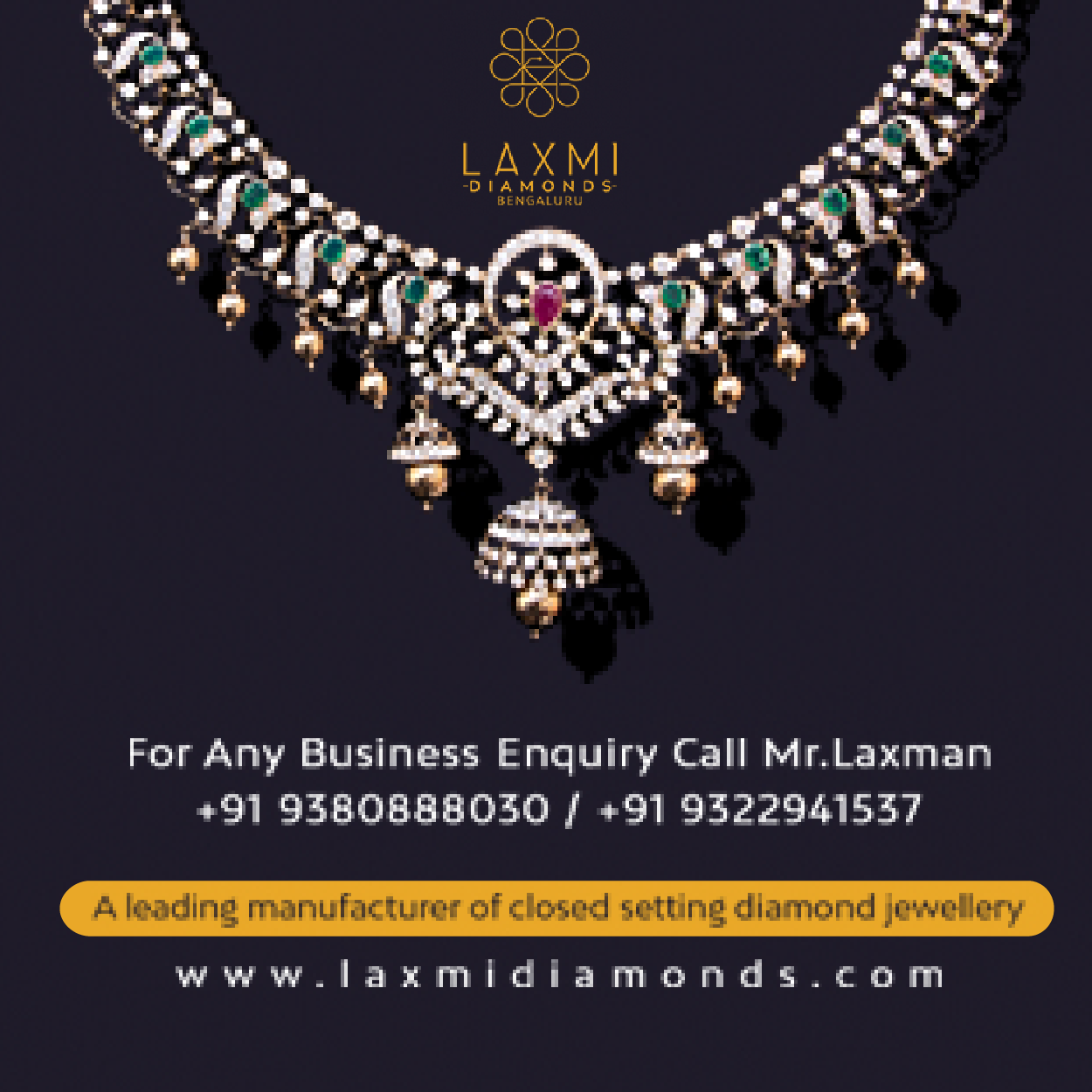By Invitation
India: A colour gemstones powerhouse
The future for India colour gemstones industry is bright. The next five years will be great for India’s colour gemstones industry: Nirmal Bardiya
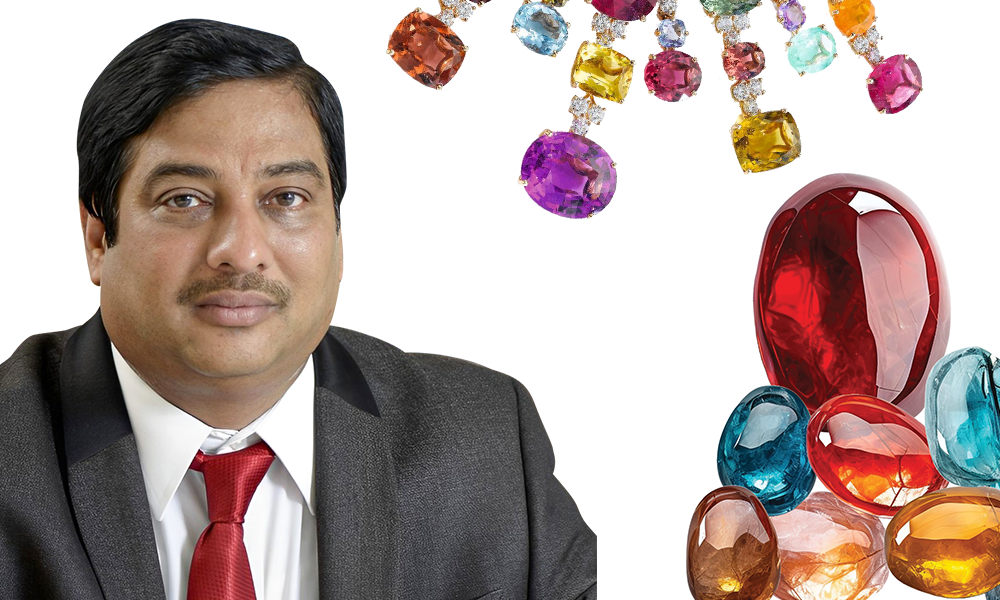
Nirmal Bardiya, MD-RMC GEMS and Regional Chairman- Rajasthan Region,GJEPC is an icon in the colour gemstone industry. His exemplary leadership and deep domain expertise of the colour gemstone industry has seen him ably leading his enterprise RMC GEMS, as well as GJEPC for Rajasthan region. Nirmal Bardiya has been honoured with “Gem Dealer of the Decade” award by Indian Diamond and Colour Stone Association (IDCA), USA in 2010.He spoke to JEWELBUZZ on India’s might in the global colour gemstone market, export and domestic market overview and other aspects of the colour gemstone sector.

Overview of Indian colour gemstone segment
The domestic colour gemstone market was a bit slow in the last few months , but now there’s an uptick , and there will be further spike with purchase for the forthcoming marriage season. Also, the dip in demand for diamonds has aided the growth of coloured gemstones segment.
Indian colour gemstones exports are mainly to the US, Europe, Russia and China. 7The slowdown in China has greatly affected the quantum of exports. Exports have slowed down, but we should see an increase, especially for the US region driven by demand for the forthcoming Christmas season. October onwards there will be uptick in both domestic and exports segment.
Market Trends
Besides emeralds and rubies, which have always been best sellers, the stones that have gained popularity are rubellite, tourmaline, kunzite, peach morganite and tanzanite. There are also stones like paraiba , which are in the premium category; they are expensive and not within reach of all consumers.
Designers are increasingly emphasizing on gemstones. In India, US and other markets, diamonds+colour gemstones combination is a hot trend.
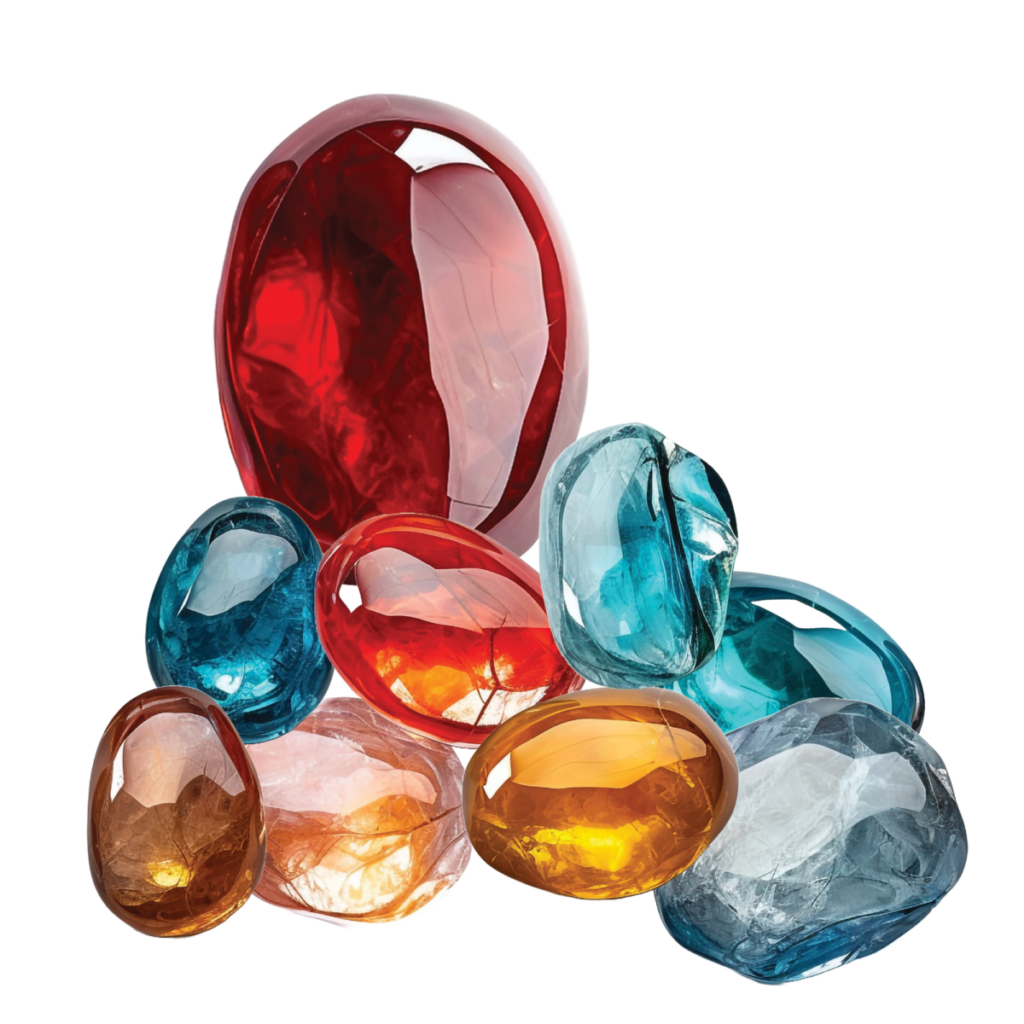
Challenges
Speaking of challenges or problems,there is raw material supply shortage for most colour stones besides emerald; emerald supply is steady.
Certification
Certification provides consumers with confidence in the authenticity of their purchase. Currently the certification system for gemstones is not regulated. Many of the labs are not adhering to standards and their certification has no value. GJEPC is working with the Indian government to establish uniform certification standards and ensure that only certification from authorized labs (a mix of government and private labs) will be considered valid. Currently government labs are based in Mumbai, Delhi and Rajasthan.

Sustainability and ethical sourcing
Sustainability and ethical sourcing is a very important issue. it is essential for exporters to show they comply with sustainability and ethical sourcing norms, else they will lose global customers.
Exports oriented in Sitapur export zone are regularly audited for sustainability and ethical sourcing. Exporters are also obtaining Responsible Jewellery Council (RJC) certification.RJC’s Code of Practices is a landmark standard for the jewellery supply chain and addresses a wide range of supply chain issues, including business ethics, human rights, social and environmental performance.
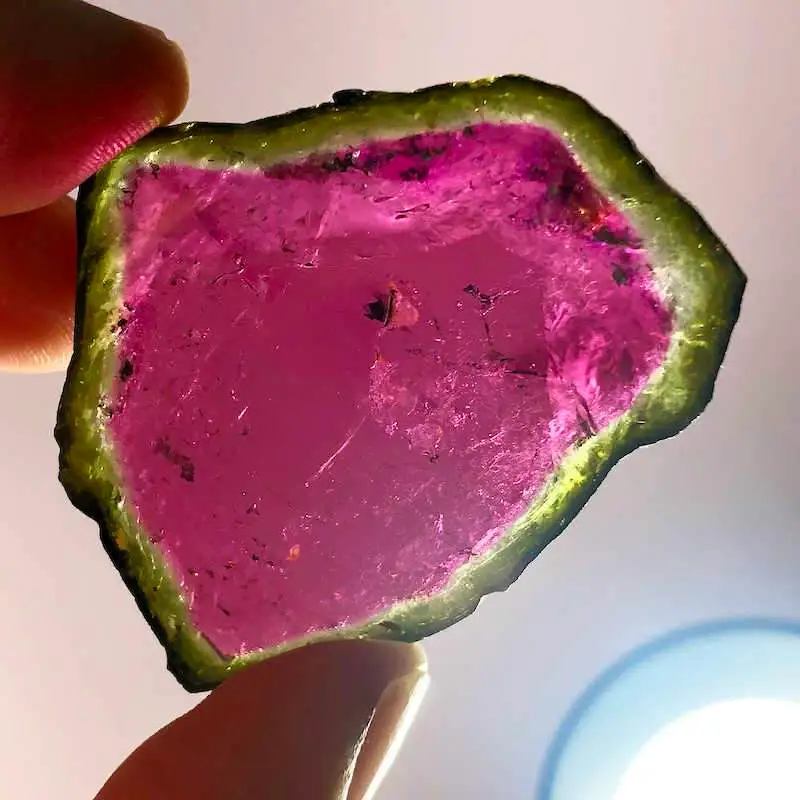
India jewellery designing
India is known for its expertise in gemstone cutting and jewellery designing and manufacturing. In our current jewellery designers we see traditional craftsmanship meeting modern design.With regard to our current jewellery design education and training, I feel it needs to be strengthened further to make us truly competitive globally.
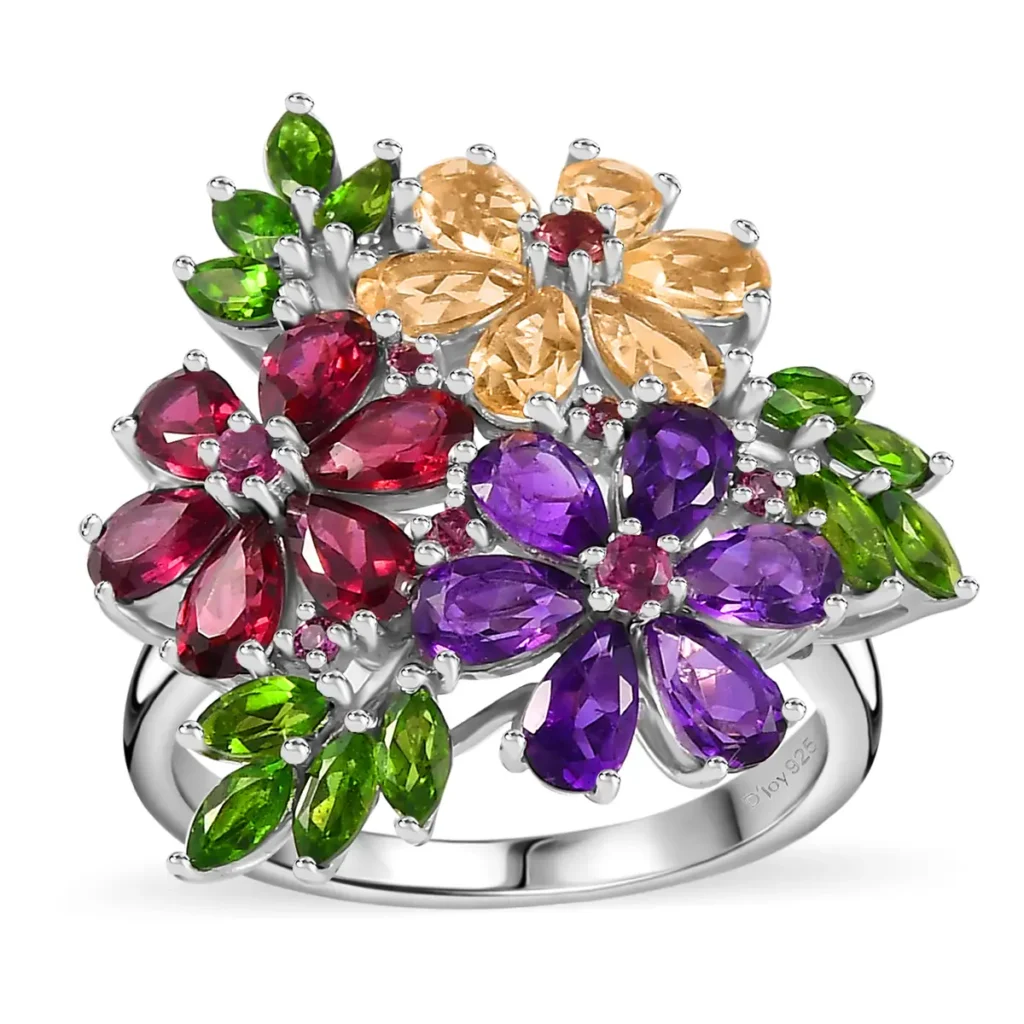
GJEPC’s aggressive promotion
GJEPC has been aggressively promoting the colour gemstones segment.Initiatives include exhibitions, marketing outreach and advertising campaigns. GJEPC’s International Gem & Jewellery Show which features only select foreign buyers is a great buyer-seller platform to drive colour gemstones exports.
India: A colour gemstones powerhouse
India, renowned for its rich heritage in gemstone mining and jewellery making, is capitalizing on a global resurgence in demand for coloured gemstones.India is seen as a powerhouse in the colour gemstones segment. Jaipur and Bangkok , the two main colour gemstones markets control 90 percent of the global trade.Jaipur is truly a global capital for colour gemstones jewellery.
The future for India’s colour gemstones industry is bright: both, domestic sales and exports will see steady growth. The next five years will be great for India’s colour gemstones industry.


By Invitation
Diamonds Reimagined: The Rise of Lab-Grown Elegance
By Akash Talesara
President : Sky Gold ltd.
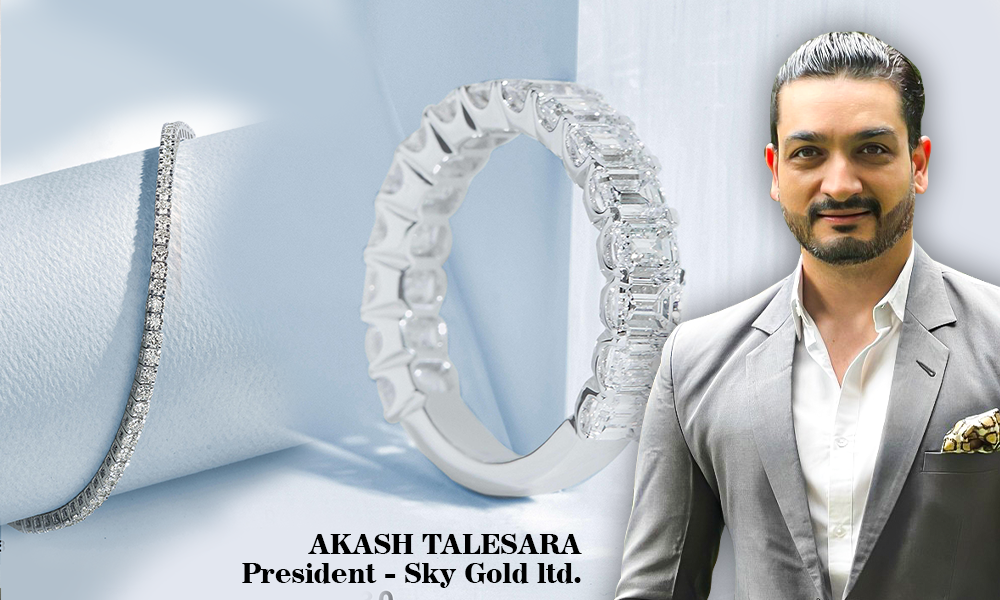
Celebrity Endorsements of LGDs
Celebrity endorsements are pivotal in transforming ethical luxury from an idealistic concept to a mainstream trend. When well-known figures embrace lab-grown diamonds, they redefine luxury by blending style with responsibility. These endorsements break the notion that luxury is only about exclusivity and excess, shifting the narrative to one where ethics and beauty coexist. As consumers increasingly prioritize sustainability, celebrities make it easier for them to align their values with their purchases, normalizing lab-grown diamonds as the future of luxury. This shift is not just a trend—it’s a cultural movement led by those who hold significant influence.
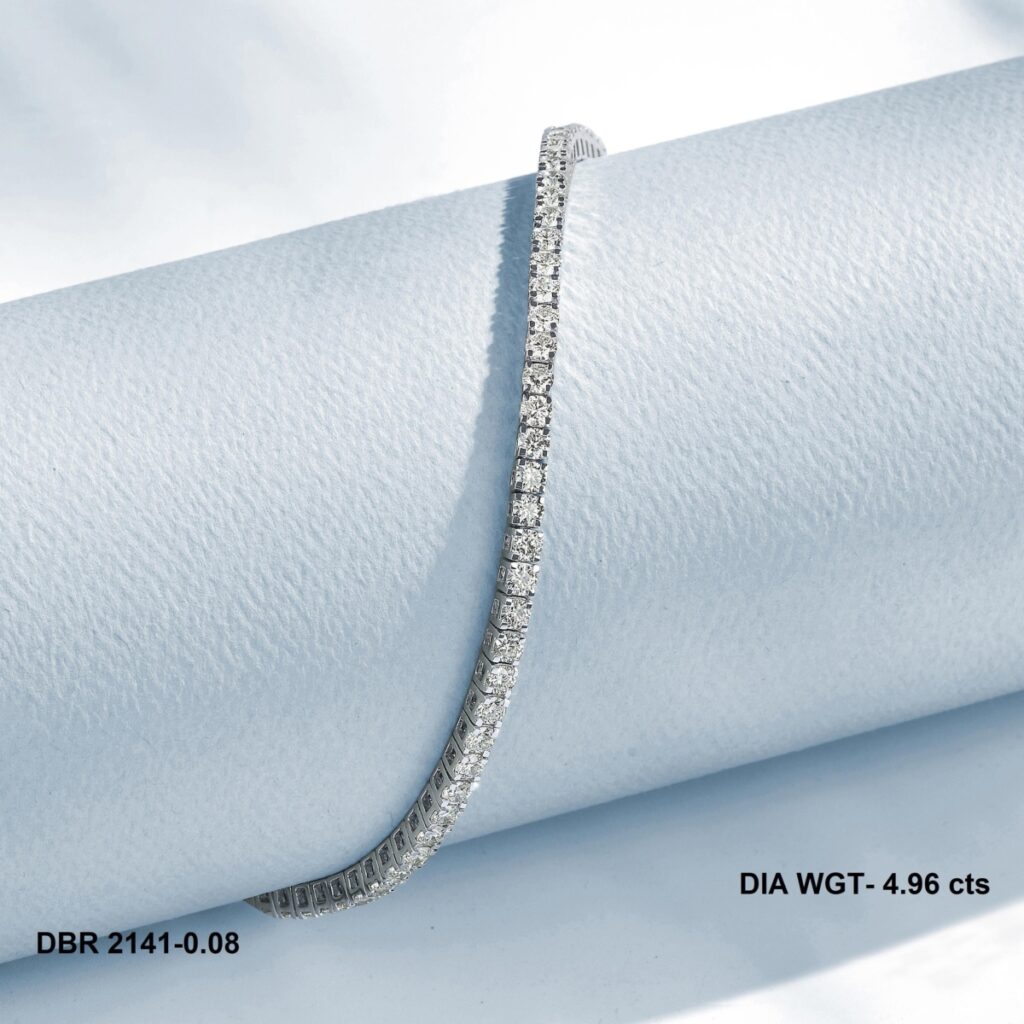
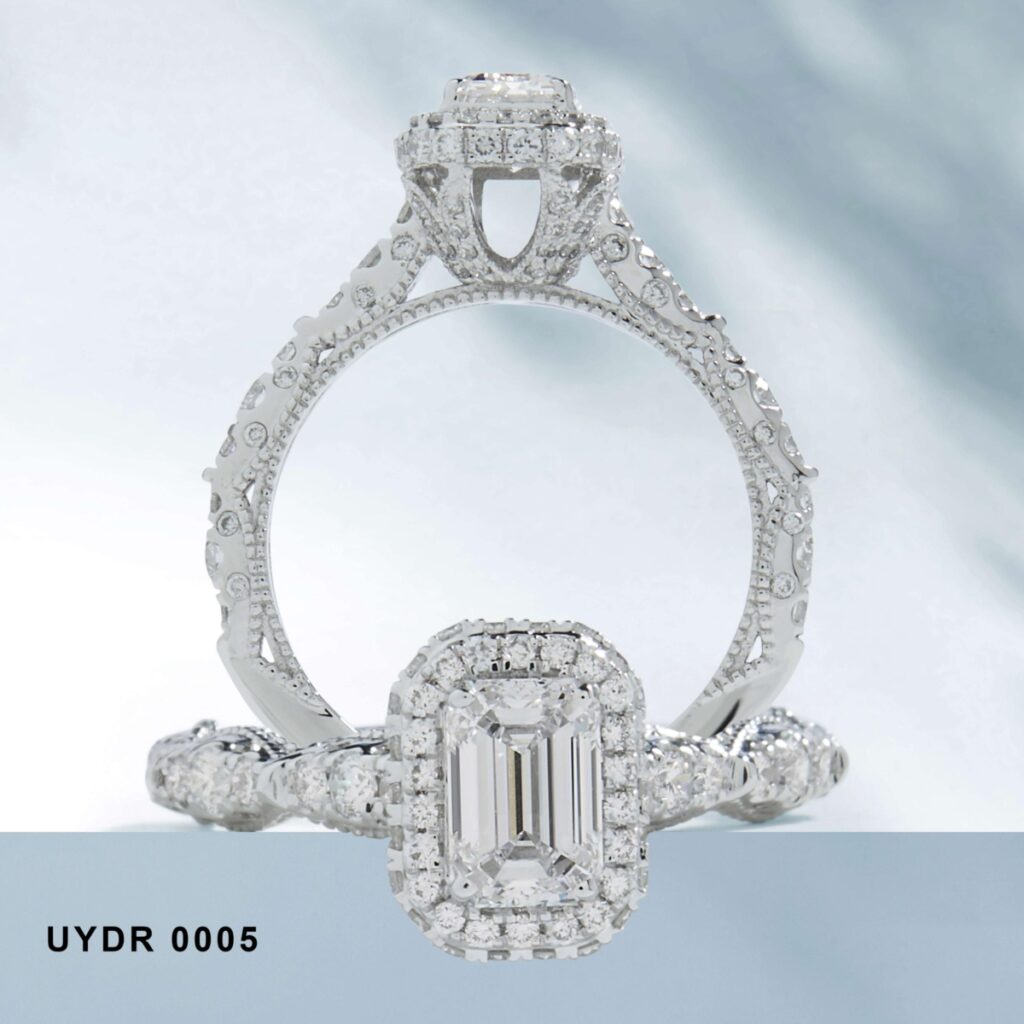
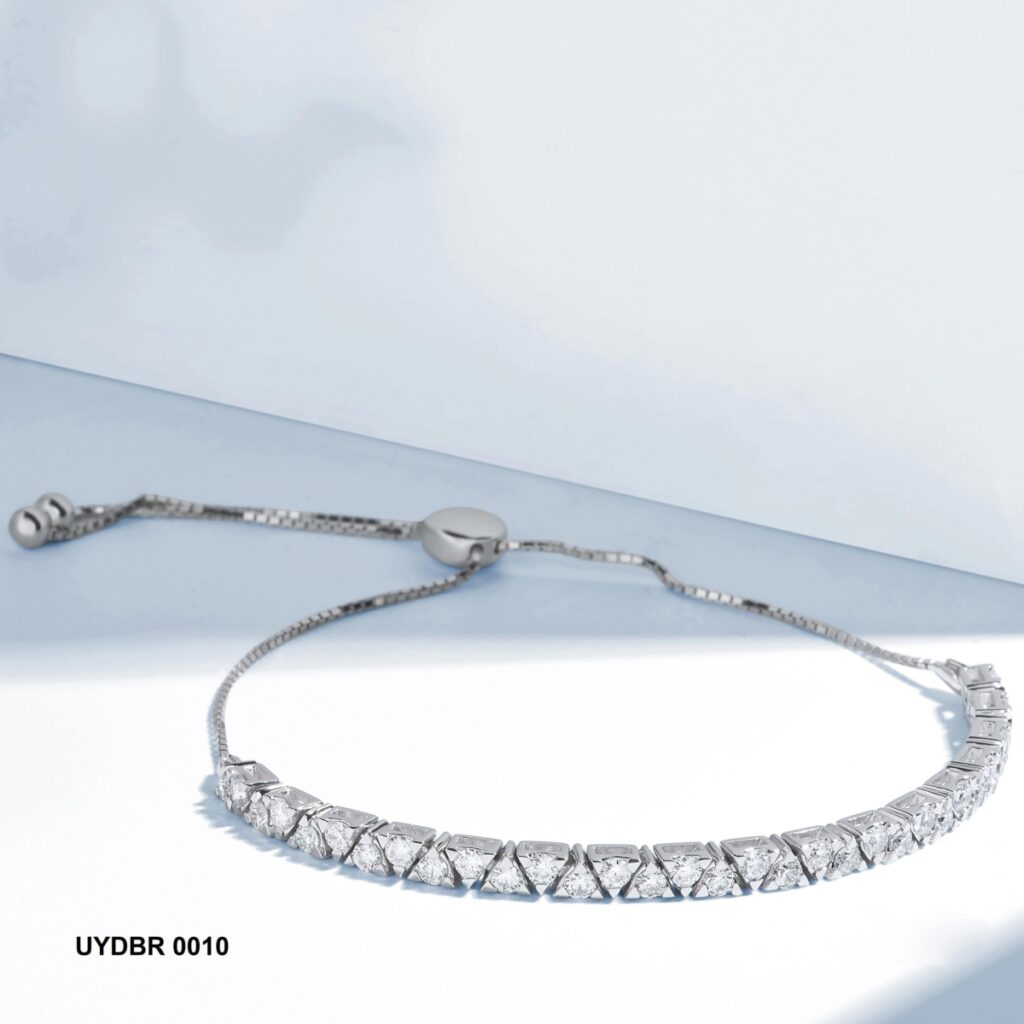
Global jewellery brands leveraging celebrity stardom
Global jewellery brands are tapping into the power of celebrity to position lab-grown diamonds as the next big thing in luxury. Celebrities bring visibility, credibility, and aspirational value to these diamonds, helping brands reframe them as a symbol of modern luxury. Through collaborations and campaigns featuring stars, jewellery brands communicate that lab-grown diamonds are not only ethically sound but also high-end and exclusive. These celebrity endorsements connect luxury with conscious consumption, shifting consumer perceptions and setting a new standard in the luxury market. This strategic use of star power helps lab-grown diamonds carve a niche as the future of sustainable luxury.
Celebrity collaborations driving the popularity of LGDs
Celebrity collaborations are a game-changer in how lab-grown diamonds are perceived. When icons align themselves with these diamonds, they make the concept of sustainable luxury not just appealing but aspirational. Through their influence, celebrities turn lab-grown diamonds into a desirable, high-status item, making them relatable for the general public. By wearing and endorsing these sustainable gems, they make them accessible to a broader range of consumers. These partnerships not only elevate the diamonds’ appeal but also serve as a bridge between high-end luxury and everyday luxury, making it more attainable for a global audience.



Millennials and Gen Z driving the shift toward LGDs
The jewellery market is shifting gears, embracing sustainability, ethical practices, and personalized designs like never before. Millennials and Gen Z are leading the charge in the lab-grown diamond movement. These diamonds are made with minimal environmental impact, offering a more eco-friendly and responsible choice. It’s not just about the sparkle, it’s about supporting brands that stand for authenticity and integrity. This change is reshaping the jewellery industry, blending craftsmanship with conscience and redefining luxury as a perfect balance of elegance and ethics.
By Invitation
Diamonds: Natural, grown, and their needs for differentiation in the global jewellery market
By Ramit Kapoor
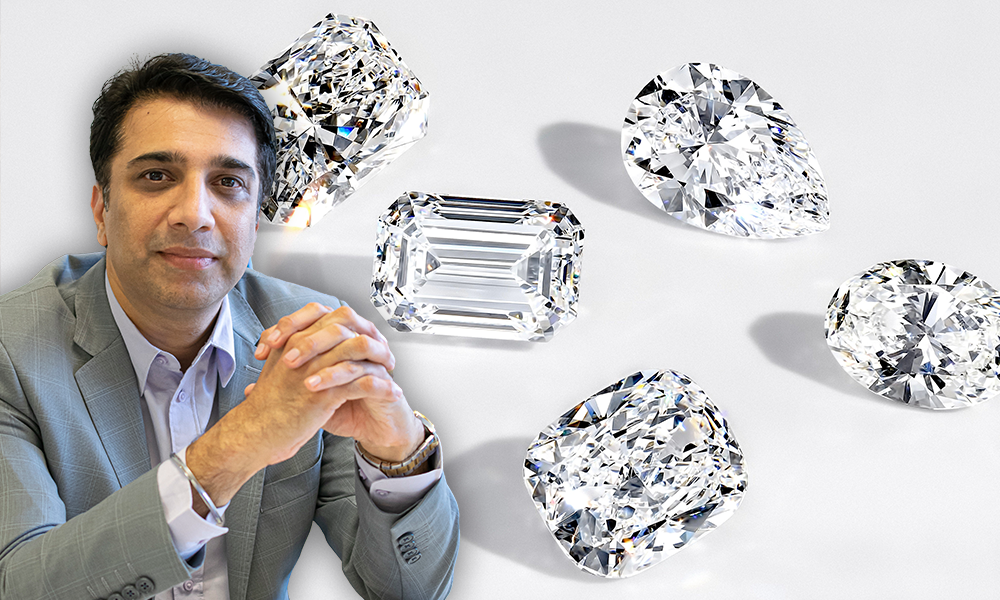
The debate between lab grown diamonds and naturals doesn’t seem to die down. Natural diamonds have had an unfettered rule in the global fine jewellery business for centuries until technological advancement allowed lab-grown diamonds, hitherto used in machine tools and cutting, found their way successfully into the fashion and jewellery space purely based on two reasons : perceived identical appearance and a staggeringly low price. Their entry into the market created a space for affordable jewellery, but they are not designed or are equipped to take over the natural diamond market. That’s because they are different and can be scientifically identified as such.
Far from disrupting the prominence of natural diamonds, LGDs have emerged as a complementary force, addressing distinct consumer needs while broadening the appeal of diamond jewelry. But, let’s understand the purpose and appeal of each category.
Natural diamonds continue to hold an unparalleled allure, deeply rooted in their rarity, geological history, and cultural heritage. They symbolize luxury, timelessness, and emotional significance, often marking milestone moments like engagements, weddings, and the creation of family heirlooms. Spending billions of years to be formed under the earth’s surface, natural diamonds command admiration from customers who associate lasting happiness and joy with the person they are buying it for, be it a self-purchase or a gift. Its journey of formation itself carries that value which, thanks to rising awareness, is of great value to its target audience irrespective of age barriers. Such consumers prioritize provenance, ethical sourcing, and origin determination, which reinforce the enduring appeal and exclusivity of natural diamonds.
On the other hand, lab-grown diamonds have carved out their own niche in the global jewelry market, starting with eco-conscious Millennials and Gen Z consumers in the United States. These synthetic diamonds appeal to buyers seeking sustainable and affordable alternatives. In India, a global hub for jewelry, the demand for LGDs is still at its nascent stage, because consumers are still understanding the product. Hence, there is a slow but steady growth in demand driven by their cost-effectiveness and the growing adoption of Western fashion sensibilities. Offering flexibility in design, LGDs are well-suited for trendy, everyday jewelry that embraces unconventional materials such as silver, tungsten, and titanium. They provide consumers with the freedom to explore unique styles while aligning with contemporary values of affordability and sustainability.
The distinction between natural and lab-grown diamonds is not merely academic—it is vital to maintaining consumer trust. Nomenclature is of paramount importance in this regard, as there are several ways to identify a lab-grown diamond. Since they are created in a controlled environment, their origin is different from those built by nature, and hence, must be positioned accordingly to extend confidence to customers of either segment. Thus, while both have their own value propositions, transparency in branding and communication is essential. Lab-grown diamonds should be presented as a distinct category, emphasizing their origin and purpose, rather than being combined with natural diamonds.
As the diamond industry evolves, embracing the differences between natural and lab-grown diamonds is key to unlocking their full potential. Each caters to specific consumer preferences—natural diamonds for their legacy and emotional resonance, and lab-grown diamonds for their modern, versatile appeal. Retailers and stakeholders must adopt tailored marketing strategies and far better quality in certification and grading standards to give consumers exactly what they bought their products for. While the entire supply chain needs to be strongly educated to firstly identify the differences and sell the right jewellery, retailers especially need to refine marketing messages to effectively communicate these unique value propositions. This can be done by conducting awareness workshops for end-consumers and often showcasing both varieties to them just for knowledge. All in all, by fostering transparency, differentiation, and synergy within the supply chain, the industry can ensure the sustainable growth of both segments, securing a bright future for diamond jewelry on a global scale.
By Invitation
How to position your store in the jewellery market
Strategies for Success: Effectively Positioning Your Jewelry Store in a Competitive Market
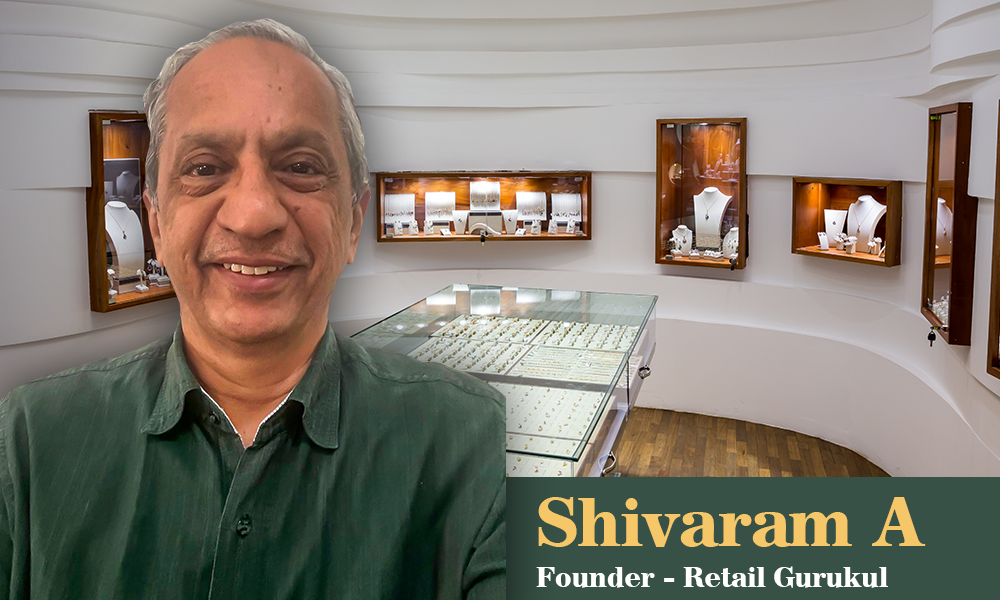
Shivaram A is a much sought after mentor, consultant, trainer and speaker across multiple industry platforms. He founded Retail Gurukul in 2012 as a Consulting & Training company. Shivaram has since helped and continues to help retailers and manufacturers, significantly improve their business performance across various metrics.
Shivaram’s A Guide to Jewellery Retailing-Consumer facing operations is ultimate resource for jewellery store owners striving for success in today’s competitive market. Discover the secrets to making your jewellery retailing store succeed, draw in a steady flow of customers, and cultivate lasting loyalty. This comprehensive guide offers actionable advice and real-world examples to elevate your store’s aesthetics, service quality, and sales performance. This is an extract from A Guide to Jewellery Retailing-Consumer facing operations.
From the small corner-store goldsmith to the high-end boutique jeweller in their own high-rise building, jewellery retailers come in all forms and sizes. With the Indian jewellery market teeming with nearly 300,000 players, every jewellery retailer must position themselves uniquely to make their presence known in this competitive scenario.
As a jewellery retailer, you first have to decide whether you want to remain as just a “store” or create a “brand”. But what is the difference?
A “brand” has some definable qualities by which it can be uniquely identified. These qualities or features form a perception in the minds of the customer which is called its brand equity.
As a jeweller, you can project certain aspects of your jewellery merchandise or customer service as brand quality.
Look at how PC Chandra, the renowned Kolkata Jewellers are trying to position themselves with the help of the famous creative agency J Walter Thompson (JWT). Ayan Chakraborty, VP and executive business director, JWT Kolkata, said, “PC Chandra’s intricate craftsmanship and the brand’s unique image in the minds of Bengalis all over the world is something we kept in mind while working.”

Arjun Mukherjee, VP and ECD, JWT Kolkata, added, “The challenge was to create a philosophy for the brand which every modern woman will relate to. We went beyond the beauty space in jewellery and tried to find an emotion that will resonate with one and all.”
You too can position your jewellery outlet as a unique brand by defining its values and expressing your trade philosophy in the following ways.
Ways in which you can position your outlet
Jewellery stores fall into certain categories. First, try to identify which category you belong to, and then add value to it by defining your strengths. You may be a:
1. Personal Jeweller
When a customer looks for jewellery “tailor-made to his taste”, he comes to the personal jeweller. The Personal Jeweller highlights the uniqueness of design, exclusivity and personalization as his value points. Elite and royal families of illustrious lineage and social celebrities often prefer to have their own personal jewellers.
As a Personal Jeweller, you must vouch for your individuality in design and integrity in trust. If you possess Jewellery design software and have bagged Jewellery design awards, you really can boast of being a genuine Personal Jeweller.
2. Ethnic Jeweller
For people who have a taste for traditional and ethnic designs, the Ethnic Jeweller is the destination. As an Ethnic Jeweller, you must have profound knowledge in temple designs and must have the capacity to reproduce them without even the slightest difference. Polki, Jadau, Tanjore, Chettinad and Malabar designs feature as ethnic offerings.
3. Modern Jeweller
For the young and trendy, the Modern Jeweller is the person to call on. The Modern Jeweller must dabble in fusion and fashion. Rhodium, Rose gold, Platinum and 18k designs are part of the modern offerings.
4. Boutique Jeweller
The boutique Jeweller is the guy who prides himself on his jewellery range and exemplary service. These artistic showrooms offer an appealing ambience and a comfortable customer experience. Boutique Jewellers have several jewellery lines made by different designers.
5. Estate Jeweller
If you are looking for antique jewellery or vintage heirlooms, the Estate Jeweller is the guy to go to. As an Estate Jeweller, you must have the resourcefulness to seek and procure historic jewellery with sufficient proof. Estate jewellers are very expensive as they deal with high-end jewellery collectables.
6. Main Street Jeweller
The Main Street Jeweller has the sole objective of capturing the interest of the urban audience. He caters to them with an eclectic mix of traditional and modern jewellers with their latest preferences in mind.
7. Chain Store Jeweller
With branches at multiple locations, the Chain Store Jeweller prides itself on its wide geographical presence and popularity. His network of stores may be at diverse locations but portray the same brand image.

Steps to position your Jewellery store
1. First, identify yourself with a particular Jeweller category among the ones listed above.
2. Outline your strengths in stock, service, range, design etc. 3. Zero in on your “unique selling points” – is it affordability, service, repair facility, cost savings…
4. Crystallize your brand persona as a brand image with the help of expert consultants like Retail Gurukul who can bring to light the hidden values of your brand.
5. Position your brand with this persona by forming a unique brand image and taglines.
6. Popularize your brand using these brand messages and establish your brand.
Your brand is as precious as your jewellery. Position it with perfection to reach the pinnacle of success.
-
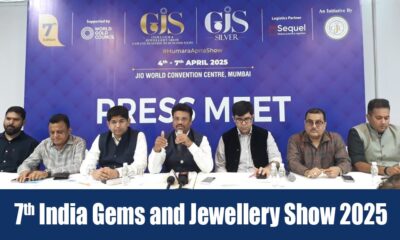
 National News11 hours ago
National News11 hours agoGJC to host 7th India Gems and Jewellery Show 2025 from 4th to 7th April 2025 to cater Akshaya Tritiya and wedding season demands
-

 National News9 hours ago
National News9 hours agoMalabar Gold & Diamonds Partners with Accenture to Drive AI-Powered Digital Transformation
-
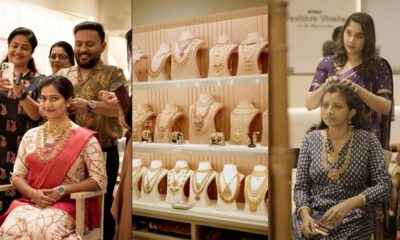
 National News9 hours ago
National News9 hours agoBhima Jewellery Celebrates Centenary with a Grand Success at the Bhima Fairytale Wedding Exhibition
-

 GlamBuzz16 hours ago
GlamBuzz16 hours agoLakmé Fashion Week 2025: A Dazzling Celebration of Glamour, Innovation, and Timeless Style










